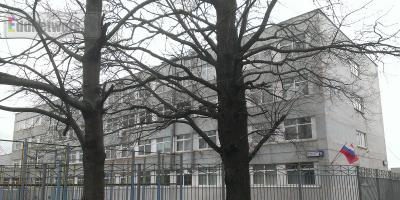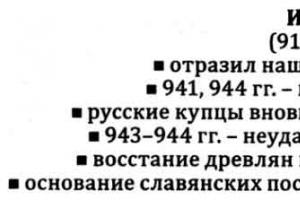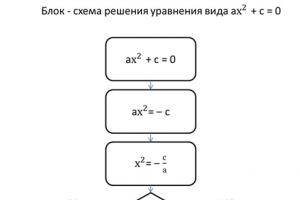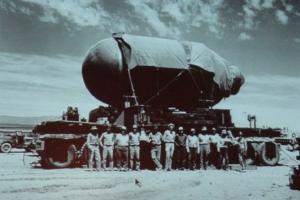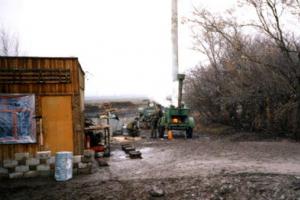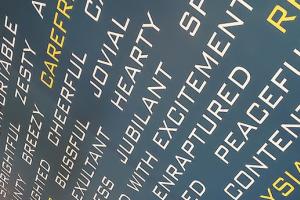Armed conflict in 1994-1996 (first Chechen war)
The Chechen armed conflict of 1994-1996 - military actions between Russian federal troops (forces) and armed formations of the Chechen Republic of Ichkeria, created in violation of the legislation of the Russian Federation.
In the fall of 1991, in the context of the beginning of the collapse of the USSR, the leadership of the Chechen Republic declared the state sovereignty of the republic and its secession from the USSR and the RSFSR. The bodies of Soviet power on the territory of the Chechen Republic were dissolved, the laws of the Russian Federation were repealed. The formation of the armed forces of Chechnya began, led by Supreme Commander-in-Chief President of the Chechen Republic Dzhokhar Dudayev. Defense lines were built in Grozny, as well as bases for waging sabotage warfare in mountainous areas.
The Dudayev regime had, according to the calculations of the Ministry of Defense, 11-12 thousand people (according to the Ministry of Internal Affairs, up to 15 thousand) of regular troops and 30-40 thousand people of armed militia, of which 5 thousand were mercenaries from Afghanistan, Iran, Jordan, and the North Caucasus republics and etc.
On December 9, 1994, President of the Russian Federation Boris Yeltsin signed Decree No. 2166 “On measures to suppress the activities of illegal armed groups on the territory of the Chechen Republic and in the zone of the Ossetian-Ingush conflict.” On the same day, the Government of the Russian Federation adopted Resolution No. 1360, which provided for the disarmament of these formations by force.
On December 11, 1994, the movement of troops began in the direction of the Chechen capital - the city of Grozny. On December 31, 1994, troops, by order of the Minister of Defense of the Russian Federation, began the assault on Grozny. Russian armored columns were stopped and blocked by Chechens in different areas of the city, and the combat units of the federal forces that entered Grozny suffered heavy losses.
(Military encyclopedia. Moscow. In 8 volumes, 2004)
The further course of events was extremely negatively affected by the failure of the eastern and western groupings of troops; the internal troops of the Ministry of Internal Affairs also failed to complete the assigned task.
Fighting stubbornly, federal troops took Grozny on February 6, 1995. After the capture of Grozny, the troops began to destroy illegal armed groups in other settlements and in the mountainous regions of Chechnya.
From April 28 to May 12, 1995, according to the Decree of the President of the Russian Federation, a moratorium on the use of armed force in Chechnya was implemented.
Illegal armed groups (IAF), using the negotiation process that had begun, redeployed part of their forces from mountainous regions to the locations of Russian troops, formed new groups of militants, fired at checkpoints and positions of federal forces, and organized terrorist attacks of unprecedented scale in Budennovsk (June 1995), Kizlyar and Pervomaisky (January 1996).
On August 6, 1996, federal troops, after heavy defensive battles, having suffered heavy losses, left Grozny. INVFs also entered Argun, Gudermes and Shali.
On August 31, 1996, cessation of hostilities agreements were signed in Khasavyurt, ending the first Chechen war. After the conclusion of the agreement, the troops were withdrawn from the territory of Chechnya in an extremely short period of time from September 21 to December 31, 1996.
On May 12, 1997, a Treaty on Peace and Principles of Relations between the Russian Federation and the Chechen Republic of Ichkeria was concluded.
The Chechen side, not observing the terms of the agreement, took the line towards the immediate secession of the Chechen Republic from Russia. Terror against employees of the Ministry of Internal Affairs and representatives of local authorities intensified, and attempts to rally the population of other North Caucasian republics around Chechnya on an anti-Russian basis intensified.
Counter-terrorism operation in Chechnya in 1999-2009 (second Chechen war)
In September 1999, a new phase of the Chechen military campaign began, which was called the counter-terrorist operation in the North Caucasus (CTO). The reason for the start of the operation was the massive invasion of Dagestan on August 7, 1999 from the territory of Chechnya by militants under the overall command of Shamil Basayev and the Arab mercenary Khattab. The group included foreign mercenaries and Basayev’s militants.
Fighting between federal forces and invading militants continued for more than a month, ending with the militants being forced to retreat from the territory of Dagestan back to Chechnya.
On these same days - September 4-16 - a series of terrorist attacks were carried out in several cities of Russia (Moscow, Volgodonsk and Buinaksk) - explosions of residential buildings.
Considering Maskhadov’s inability to control the situation in Chechnya, the Russian leadership decided to conduct a military operation to destroy the militants on the territory of Chechnya. On September 18, the borders of Chechnya were blocked by Russian troops. On September 23, the President of the Russian Federation issued a Decree “On measures to increase the effectiveness of counter-terrorism operations in the North Caucasus region of the Russian Federation,” providing for the creation of a Joint Group of Troops (Forces) in the North Caucasus to conduct counter-terrorism operations.
On September 23, Russian aircraft began bombing the capital of Chechnya and its environs. On September 30, a ground operation began - armored units of the Russian army from the Stavropol Territory and Dagestan entered the territory of the Naur and Shelkovsky regions of the republic.
In December 1999, the entire flat part of the territory of the Chechen Republic was liberated. The militants concentrated in the mountains (about 3,000 people) and settled in Grozny. On February 6, 2000, Grozny was taken under the control of federal forces. To fight in the mountainous regions of Chechnya, in addition to the eastern and western groups operating in the mountains, a new group “Center” was created.
On February 25-27, 2000, units of the “West” blocked Kharsenoy, and the group “East” closed the militants in the area of Ulus-Kert, Dachu-Borzoi, and Yaryshmardy. On March 2, Ulus-Kert was liberated.
The last large-scale operation was the liquidation of Ruslan Gelayev’s group in the area of the village. Komsomolskoye, which ended on March 14, 2000. After this, the militants switched to sabotage and terrorist methods of warfare, and federal forces countered the terrorists with the actions of special forces and operations of the Ministry of Internal Affairs.
During the CTO in Chechnya in 2002, hostages were taken in Moscow at the Theater Center on Dubrovka. In 2004, hostages were taken at school number 1 in the city of Beslan in North Ossetia.
By the beginning of 2005, after the destruction of Maskhadov, Khattab, Barayev, Abu al-Walid and many other field commanders, the intensity of sabotage and terrorist activities of the militants decreased significantly. The only large-scale operation of the militants (the raid on Kabardino-Balkaria on October 13, 2005) ended in failure.
From midnight on April 16, 2009, the National Anti-Terrorism Committee (NAC) of Russia, on behalf of President Dmitry Medvedev, abolished the CTO regime on the territory of the Chechen Republic.
The material was prepared based on information from open sources
25 years ago, on December 11, 1994, the First Chechen War began. With the issuance of the decree of the Russian President “On measures to ensure law and order and public safety on the territory of the Chechen Republic,” Russian regular army forces entered the territory of Chechnya. The document from the "Caucasian Knot" presents a chronicle of events that preceded the start of the war and describes the course of hostilities up to the "New Year's" assault on Grozny on December 31, 1994.
The first Chechen war lasted from December 1994 to August 1996. According to the Russian Ministry of Internal Affairs, in 1994-1995, a total of about 26 thousand people died in Chechnya, including 2 thousand Russian military personnel, 10-15 thousand militants, and the rest of the losses were civilians. According to General A. Lebed's estimates, the number of deaths among civilians alone amounted to 70-80 thousand people and among federal troops - 6-7 thousand people.
Chechnya's exit from Moscow's control
The turn of the 1980-1990s. in the post-Soviet space was marked by a “parade of sovereignties” - Soviet republics of different levels (both the USSR and the Autonomous Soviet Socialist Republic) one after another adopted declarations of state sovereignty. On June 12, 1990, the first Republican Congress of People's Deputies adopted the Declaration of State Sovereignty of the RSFSR. On August 6, Boris Yeltsin uttered his famous phrase in Ufa: “Take as much sovereignty as you can swallow.”
On November 23-25, 1990, the Chechen National Congress was held in Grozny, which elected the Executive Committee (later transformed into the Executive Committee of the All-National Congress of the Chechen People (OCCHN). Major General Dzhokhar Dudayev became its chairman. The Congress adopted a declaration on the formation of the Chechen Republic of Nokhchi-Cho A few days later, on November 27, 1990, the Supreme Council of the Republic adopted the Declaration of State Sovereignty.Later, in July 1991, the second congress of the OKCHN announced the withdrawal of the Chechen Republic of Nokhchi-Cho from the USSR and the RSFSR.
During the August 1991 putsch, the Chechen-Ingush Republican Committee of the CPSU, the Supreme Council and the government of the Chechen-Ingush Autonomous Soviet Socialist Republic supported the State Emergency Committee. In turn, OKCHN, which was in opposition, opposed the State Emergency Committee and demanded the resignation of the government and secession from the USSR and the RSFSR. Ultimately, a political split occurred in the republic between supporters of the OKCHN (Dzhokhar Dudayev) and the Supreme Council (Zavgaev).
On November 1, 1991, the elected President of Chechnya, D. Dudayev, issued a decree “On declaring the sovereignty of the Chechen Republic.” In response to this, on November 8, 1991, B.N. Yeltsin signed a decree introducing a state of emergency in Checheno-Ingushetia, but practical measures for its implementation failed - two planes with special forces landing at the airfield in Khankala were blocked by supporters of independence. On November 10, 1991, the OKCHN executive committee called for breaking off relations with Russia.
Already in November 1991, supporters of D. Dudayev began seizing military camps, weapons and property of the Armed Forces and internal troops on the territory of the Chechen Republic. On November 27, 1991, D. Dudayev issued a decree on the nationalization of weapons and equipment of military units located on the territory of the republic. By June 8, 1992, all federal troops left the territory of Chechnya, leaving behind a large amount of equipment, weapons and ammunition.
In the fall of 1992, the situation in the region sharply deteriorated again, this time in connection with the Ossetian-Ingush conflict in the Prigorodny region. Dzhokhar Dudayev declared the neutrality of Chechnya, but during the escalation of the conflict, Russian troops entered the administrative border of Chechnya. On November 10, 1992, Dudayev declared a state of emergency, and the creation of a mobilization system and self-defense forces of the Chechen Republic began.
In February 1993, disagreements between the Chechen parliament and D. Dudayev intensified. The emerging disagreements ultimately led to the dissolution of parliament and the consolidation of opposition political figures in Chechnya around Umar Avturkhanov, who became the head of the Provisional Council of the Chechen Republic. The contradictions between the structures of Dudayev and Avturkhanov grew into an assault on Grozny by the Chechen opposition.
After an unsuccessful assault, the Russian Security Council decided on a military operation against Chechnya. B.N. Yeltsin put forward an ultimatum: either the bloodshed in Chechnya stops, or Russia will be forced to “take extreme measures.”
Preparing for war
Active military operations on the territory of Chechnya have been carried out since the end of September 1994. In particular, opposition forces carried out targeted bombing of military targets on the territory of the republic. The armed formations that opposed Dudayev were armed with Mi-24 attack helicopters and Su-24 attack aircraft, which had no identification marks. According to some reports, Mozdok became the base for the deployment of aviation. However, the press service of the Ministry of Defense, the General Staff, the headquarters of the North Caucasus Military District, the Air Force command and the command of the Army Aviation of the Ground Forces categorically denied that the helicopters and attack aircraft bombing Chechnya belonged to the Russian army.
On November 30, 1994, Russian President B.N. Yeltsin signed secret decree No. 2137c “On measures to restore constitutional legality and order on the territory of the Chechen Republic,” which provided for “disarmament and liquidation of armed formations on the territory of the Chechen Republic.”
According to the text of the decree, from December 1 it was prescribed, in particular, “to implement measures to restore constitutional legality and order in the Chechen Republic,” to begin disarmament and liquidation of armed groups, and to organize negotiations to resolve the armed conflict on the territory of the Chechen Republic by peaceful means.
 On November 30, 1994, P. Grachev stated that “an operation has begun to forcefully transfer Russian army officers fighting against Dudayev on the side of the opposition to the central regions of Russia.” On the same day, in a telephone conversation between the Russian Minister of Defense and Dudayev, an agreement was reached on the “immunity of Russian citizens captured in Chechnya.”
On November 30, 1994, P. Grachev stated that “an operation has begun to forcefully transfer Russian army officers fighting against Dudayev on the side of the opposition to the central regions of Russia.” On the same day, in a telephone conversation between the Russian Minister of Defense and Dudayev, an agreement was reached on the “immunity of Russian citizens captured in Chechnya.”
On December 8, 1994, a closed meeting of the State Duma of the Russian Federation was held regarding the Chechen events. At the meeting, a resolution was adopted “On the situation in the Chechen Republic and measures for its political settlement,” according to which the activities of the executive branch in resolving the conflict were recognized as unsatisfactory. A group of deputies sent a telegram to B.N. Yeltsin, in which they warned him of responsibility for the bloodshed in Chechnya and demanded a public explanation of their position.
On December 9, 1994, the President of the Russian Federation issued decree No. 2166 “On measures to suppress the activities of illegal armed groups on the territory of the Chechen Republic and in the zone of the Ossetian-Ingush conflict.” By this decree, the president instructed the Russian government to “use all means available to the state to ensure state security, legality, the rights and freedoms of citizens, protect public order, fight crime, and disarm all illegal armed groups.” On the same day, the government of the Russian Federation adopted Resolution No. 1360 “On ensuring state security and territorial integrity of the Russian Federation, legality, rights and freedoms of citizens, disarmament of illegal armed groups on the territory of the Chechen Republic and adjacent regions of the North Caucasus,” which was entrusted to a number of ministries and departments duties to introduce and maintain a special regime similar to an emergency on the territory of Chechnya, without formally declaring a state of emergency or martial law.
The documents adopted on December 9 provided for the use of troops of the Ministry of Defense and the Ministry of Internal Affairs, the concentration of which continued on the administrative borders of Chechnya. Meanwhile, negotiations between the Russian and Chechen sides were supposed to begin on December 12 in Vladikavkaz.
Beginning of a full-scale military campaign
On December 11, 1994, Boris Yeltsin signed decree No. 2169 “On measures to ensure legality, law and order and public activities on the territory of the Chechen Republic,” repealing decree No. 2137c. On the same day, the president addressed the citizens of Russia, in which, in particular, he stated: “Our goal is to find a political solution to the problems of one of the constituent entities of the Russian Federation - the Chechen Republic - to protect its citizens from armed extremism.”
 On the day the decree was signed, units of the troops of the Ministry of Defense and Internal Troops of the Ministry of Internal Affairs of the Russian Federation entered the territory of Chechnya. The troops advanced in three columns from three directions: Mozdok (from the north through areas of Chechnya controlled by the anti-Dudaev opposition), Vladikavkaz (from the west from North Ossetia through Ingushetia) and Kizlyar (from the east, from the territory of Dagestan).
On the day the decree was signed, units of the troops of the Ministry of Defense and Internal Troops of the Ministry of Internal Affairs of the Russian Federation entered the territory of Chechnya. The troops advanced in three columns from three directions: Mozdok (from the north through areas of Chechnya controlled by the anti-Dudaev opposition), Vladikavkaz (from the west from North Ossetia through Ingushetia) and Kizlyar (from the east, from the territory of Dagestan).
On the same day, December 11, an anti-war rally was held in Moscow, organized by the Russia's Choice party. Yegor Gaidar and Grigory Yavlinsky demanded to stop the movement of troops and announced a break with the policies of Boris Yeltsin. A few days later the communists also spoke out against the war.
Troops moving from the north passed unhindered through Chechnya to settlements located approximately 10 km north of Grozny, where they first encountered armed resistance. Here, near the village of Dolinsky, on December 12, Russian troops were fired from a Grad launcher by a detachment of field commander Vakha Arsanov. As a result of the shelling, 6 Russian soldiers were killed and 12 wounded, and more than 10 armored vehicles were burned. The Grad installation was destroyed by return fire.
On the line Dolinsky - the village of Pervomaiskaya, Russian troops stopped and installed fortifications. Mutual shelling began. During December 1994, as a result of shelling of populated areas by Russian troops, numerous casualties occurred among civilians.
Another column of Russian troops moving from Dagestan was stopped on December 11 even before crossing the border with Chechnya, in the Khasavyurt region, where mainly Akkin Chechens live. Crowds of local residents blocked the columns of troops, while individual groups of military personnel were captured and then transported to Grozny.
A column of Russian troops moving from the west through Ingushetia was blocked by local residents and fired upon near the village of Varsuki (Ingushetia). Three armored personnel carriers and four cars were damaged. As a result of the return fire, the first civilian casualties occurred. The Ingush village of Gazi-Yurt was shelled from helicopters. Using force, Russian troops passed through the territory of Ingushetia. On December 12, this column of federal troops was fired upon from the village of Assinovskaya in Chechnya. There were killed and wounded among the Russian military personnel; in response, fire was also opened on the village, which led to the death of local residents. Near the village of Novy Sharoy, a crowd of residents of nearby villages blocked the road. Further advance of Russian troops would lead to the need to shoot at unarmed people, and then to clashes with a militia detachment organized in each of the villages. These units were armed with machine guns, machine guns and grenade launchers. In the area located south of the village of Bamut, regular armed formations of the ChRI, which had heavy weapons, were based.
As a result, in the west of Chechnya, federal forces consolidated along the line of the conditional border of the Chechen Republic in front of the villages of Samashki - Davydenko - New Sharoy - Achkhoy-Martan - Bamut.
On December 15, 1994, against the backdrop of the first setbacks in Chechnya, Russian Defense Minister P. Grachev removed from command and control a group of senior officers who refused to send troops into Chechnya and expressed a desire “before the start of a major military operation that could entail large casualties among civilians.” population", receive a written order from the Supreme Commander-in-Chief. The leadership of the operation was entrusted to the commander of the North Caucasus Military District, Colonel General A. Mityukhin.
On December 16, 1994, the Federation Council adopted a resolution in which it invited the President of the Russian Federation to immediately stop hostilities and the deployment of troops and enter into negotiations. On the same day, Chairman of the Russian Government V.S. Chernomyrdin announced his readiness to personally meet with Dzhokhar Dudayev, subject to the disarmament of his forces.
On December 17, 1994, Yeltsin sent a telegram to D. Dudayev, in which the latter was ordered to appear in Mozdok to the plenipotentiary representative of the President of the Russian Federation in Chechnya, Minister of Nationalities and Regional Policy N.D. Egorov and FSB Director S.V. Stepashin and sign a document about the surrender of weapons and a ceasefire. The text of the telegram, in particular, read verbatim: “I suggest you immediately meet with my authorized representatives Egorov and Stepashin in Mozdok.” At the same time, the President of the Russian Federation issued decree No. 2200 “On the restoration of federal territorial executive authorities on the territory of the Chechen Republic.”
Siege and assault of Grozny
Starting from December 18, Grozny was bombed and bombed multiple times. Bombs and rockets fell mainly on areas where residential buildings were located and there were obviously no military installations. As a result, there were large casualties among the civilian population. Despite the Russian President's announcement on December 27 that the bombing of the city had ceased, air strikes continued to strike Grozny.
In the second half of December, Russian federal troops attacked Grozny from the north and west, leaving the southwestern, southern and southeastern directions practically unblocked. The remaining open corridors connecting Grozny and numerous villages of Chechnya with the outside world allowed the civilian population to leave the zone of shelling, bombing and fighting.
On the night of December 23, federal troops attempted to cut off Grozny from Argun and gained a foothold in the area of the airport in Khankala, southeast of Grozny.
On December 26, bombing of populated areas in rural areas began: in the next three days alone, about 40 villages were hit.
On December 26, it was announced for the second time about the creation of a government of national revival of the Chechen Republic headed by S. Khadzhiev and the readiness of the new government to discuss the issue of creating a confederation with Russia and enter into negotiations with it, without putting forward demands for the withdrawal of troops.
 On the same day, at a meeting of the Russian Security Council, a decision was made to send troops to Grozny. Before this, no specific plans were developed to capture the capital of Chechnya.
On the same day, at a meeting of the Russian Security Council, a decision was made to send troops to Grozny. Before this, no specific plans were developed to capture the capital of Chechnya.
On December 27, B.N. Yeltsin made a televised address to the citizens of Russia, in which he explained the need for a forceful solution to the Chechen problem. B.N. Yeltsin stated that N.D. Egorov, A.V. Kvashnin and S.V. Stepashin were entrusted with conducting negotiations with the Chechen side. On December 28, Sergei Stepashin clarified that this is not about negotiations, but about presenting an ultimatum.
On December 31, 1994, the assault on Grozny by Russian army units began. It was planned that four groups would carry out “powerful concentric attacks” and unite in the city center. For a variety of reasons, the troops immediately suffered heavy losses. The 131st (Maikop) separate motorized rifle brigade and the 81st (Samara) motorized rifle regiment, advancing from the northwestern direction under the command of General K.B. Pulikovsky, were almost completely destroyed. More than 100 military personnel were captured.
As stated by deputies of the State Duma of the Russian Federation L.A. Ponomarev, G.P. Yakunin and V.L. Sheinis stated that “a large-scale military action was unleashed in Grozny and its environs. On December 31, after fierce bombing and artillery shelling, about 250 units of armored vehicles. Dozens of them broke through to the city center. The armored columns were cut into pieces by the defenders of Grozny and began to be systematically destroyed. Their crews were killed, captured or scattered throughout the city. The troops that entered the city suffered a crushing defeat."
The head of the press service of the Russian government admitted that the Russian army suffered losses in manpower and equipment during the New Year's offensive on Grozny.
On January 2, 1995, the press service of the Russian government reported that the center of the Chechen capital was “completely controlled by federal troops” and the “presidential palace” was blocked.
The war in Chechnya lasted until August 31, 1996. It was accompanied by terrorist attacks outside Chechnya (Budennovsk, Kizlyar). The actual result of the campaign was the signing of the Khasavyurt agreements on August 31, 1996. The agreement was signed by Secretary of the Russian Security Council Alexander Lebed and Chief of Staff of Chechen militants Aslan Maskhadov. As a result of the Khasavyurt agreements, decisions were made on “deferred status” (the issue of the status of Chechnya was supposed to be resolved before December 31, 2001). Chechnya became a de facto independent state.
Notes
- Chechnya: ancient turmoil // Izvestia, 11/27/1995.
- How many died in Chechnya // Arguments and Facts, 1996.
- The assault that never happened // Radio Liberty, 10/17/2014.
- Decree of the President of the Russian Federation "On measures to restore constitutional legality and order on the territory of the Chechen Republic."
- Chronicle of an armed conflict // Human Rights Center "Memorial".
- Decree of the President of the Russian Federation "On measures to suppress the activities of illegal armed groups on the territory of the Chechen Republic and in the zone of the Ossetian-Ingush conflict."
- Chronicle of an armed conflict // Human Rights Center "Memorial".
- Chronicle of an armed conflict // Human Rights Center "Memorial".
- 1994: War in Chechnya // Obshchaya Gazeta, 12/18.04.2001.
- 20 years of the Chechen war // Gazeta.ru, 12/11/2014.
- Chronicle of an armed conflict // Human Rights Center "Memorial".
- Grozny: bloody snow of New Year's Eve // Independent Military Review, 12/10/2004.
- Chronicle of an armed conflict // Human Rights Center "Memorial".
- Signing of the Khasavyurt agreements in 1996 // RIA Novosti, 08/31/2011.
Russia waged numerous wars against invaders, there were wars as obligations to allies, but, unfortunately, there were wars, the causes of which were related to the illiterate activities of the country's leaders.
History of the conflict
It all started quite peacefully even under Mikhail Gorbachev, who, by announcing the beginning of perestroika, actually opened the way for the collapse of a huge country. It was at this time that the USSR, which was actively losing its foreign policy allies, began to have problems within the state. First of all, these problems were associated with the awakening of ethnic nationalism. They manifested themselves most clearly in the Baltic and Caucasus territories.
Already at the end of 1990, the National Congress of the Chechen People was convened. It was headed by Dzhokhar Dudayev, a major general of the Soviet Army. The goal of the congress was secession from the USSR and the creation of an independent Chechen Republic. Gradually this decision began to come true.
Back in the summer of 1991, dual power was observed in Chechnya: the government of the Chechen-Ingush Autonomous Soviet Socialist Republic itself and the government of the Chechen Republic of Ichkeria under Dzhokhar Dudayev continued to work there. But in September 1991, after the unsuccessful actions of the State Emergency Committee, the Chechen separatists felt that a favorable moment had arrived, and Dudayev’s armed guards seized the television center, the Supreme Council and the Radio House. In fact, a coup d'état took place.
Power passed into the hands of the separatists, and on October 27 parliamentary and presidential elections were held in the republic. All power was concentrated in the hands of Dudayev.
Nevertheless, on November 7, Boris Yeltsin considered it necessary to introduce a state of emergency in the Chechen-Ingush Republic and thereby created the reason for the start of a bloody war. The situation was aggravated by the fact that there was a large amount of Soviet weapons in the republic, which they did not have time to remove.
For some time the situation in the republic was contained. An opposition was created against Dudayev, but the forces were unequal.
The Yeltsin government at that time had neither the strength nor the political will to take any effective measures, and, in fact, Chechnya became practically independent from Russia in the period from 1991 to 1994. It formed its own authorities, its own state symbols. However, in 1994, the Yeltsin administration decided to restore constitutional order in Chechnya. Russian troops were brought into its territory, which marked the beginning of a full-scale war.
Progress of hostilities
|
Federal aviation attack on Chechen airfields. Destroying militant aircraft |
|
|
Entry of federal troops into the territory of Chechnya |
|
|
Federal troops approached Grozny |
|
|
The beginning of the assault on Grozny |
|
|
Capture of the Presidential Palace |
|
|
Creation of the "South" group and the complete blockade of Grozny |
|
|
Conclusion of a temporary truce |
|
|
Despite the truce, street fighting continues. Militant groups retreat from the city |
|
|
The last district of Grozny has been liberated. The pro-Russian administration of Chechnya was formed, headed by S. Khadzhiev and U. Avturkhanov |
|
|
Capture of Arghun |
|
|
Shali and Gudermes taken |
|
|
Fighting near the village of Semashki |
|
|
April 1995 |
End of fighting in lowland Chechnya |
|
The beginning of hostilities in mountainous Chechnya |
|
|
Capture of Vedeno |
|
|
The regional centers of Shatoi and Nozhai-Yurt were taken |
|
|
Terrorist attack in Budyonnovsk |
|
|
First round of negotiations. Moratorium on hostilities for an indefinite period |
|
|
Second round of negotiations. Agreement on the exchange of prisoners “all for all”, disarmament of ChRI detachments, withdrawal of federal troops, holding free elections |
|
|
The militants capture Argun, but after the battle they are driven out by federal troops |
|
|
Gudermes was captured by militants and a week later cleared by federal troops |
|
|
Elections were held in Chechnya. Defeated Doku Zavgaev |
|
|
Terrorist attack in Kizlyar |
|
|
Militant attack on Grozny |
|
|
Liquidation of Dzhokhar Dudayev |
|
|
Meeting in Moscow with Z. Yandarbiev. Armistice agreement and prisoner exchange |
|
|
After the federal ultimatum, attacks on militant bases resumed |
|
|
Operation Jihad. Separatist attack on Grozny, assault and capture of Gudermes |
|
|
Khasavyurt agreements. Federal troops were withdrawn from Chechnya, and the status of a republic was postponed until December 31, 2001 |
Results of the war
Chechen separatists perceived the Khasavyurt agreements as a victory. Federal troops were forced to leave Chechnya. All power remained in the hands of the self-proclaimed Republic of Ichkeria. Instead of Dzhokhar Dudayev, Aslan Maskhadov took power, who was not much different from his predecessor, but had less authority and was forced to constantly make compromises with the militants.
The end of the war left behind a devastated economy. Cities and villages were not restored. As a result of the war and ethnic cleansing, all representatives of other nationalities left Chechnya.
The internal social situation has changed critically. Those who previously fought for independence have descended into criminal squabbles. The heroes of the republic turned into ordinary bandits. They hunted not only in Chechnya, but also throughout Russia. Kidnapping has become a particularly profitable business. Neighboring regions especially felt this.
Corpses in the back of a truck in Grozny. Photo: Mikhail Evstafiev
Exactly 23 years ago, on December 11, 1994, Russian President Boris Yeltsin signed a decree “On measures to ensure law, order and public safety in the territory of the Chechen Republic.” On the same day, units of the United Group of Forces (Ministry of Defense and Ministry of Internal Affairs) began military operations in Chechnya. Perhaps some participants in the first clashes were mentally prepared for death, but hardly any of them suspected that they would be stuck in this war for almost two years. And then he will come back again.
I would not like to talk about the causes and consequences of the war, about the behavior of the main characters, about the number of losses, about whether it was a civil war or an anti-terrorist operation: hundreds of books have already been written about this. But many photographs certainly need to be shown so that you never forget how disgusting any war is.
Russian Mi-8 helicopter shot down by Chechens near Grozny. December 1, 1994 
Photo: Mikhail Evstafiev
Despite the fact that the Russian army officially began hostilities in December 1994, the first Russian soldiers were captured by the Chechens back in November. 
Photo: AP Photo / Anatoly Maltsev
Dudayev's militants pray against the backdrop of the Presidential Palace in Grozny 
Photo: Mikhail Evstafiev
In January 1995, the palace looked like this: 
Photo: Mikhail Evstafiev
Dudayev's militant with a homemade submachine gun in early January 1995. In Chechnya in those years, various types of weapons, including small arms, were collected. 
Photo: Mikhail Evstafiev
Destroyed BMP-2 of the Russian army 
Photo: Mikhail Evstafiev
Prayer against the backdrop of a fire caused by shrapnel hitting a gas pipe 
Photo: Mikhail Evstafiev
Action 
Photo: Mikhail Evstafiev
Field commander Shamil Basayev rides on a bus with hostages 
Photo: Mikhail Evstafiev
Chechen militants ambushed a convoy of Russian armored vehicles 
Photo: AP PHOTO / ROBERT KING
On New Year's Eve 1995, clashes in Grozny were especially brutal. The 131st Maykop Motorized Rifle Brigade lost many soldiers. 
Militants fire back at advancing Russian units. 
Photo: AP PHOTO / PETER DEJONG
Children play in the suburbs of Grozny 
AP PHOTO / EFREM LUKATSKY
Chechen militants in 1995 
Photo: Mikhail Evstafiev / AFP


Photo: Christopher Morris
Minute Square in Grozny. Evacuation of refugees. 
Gennady Troshev at the stadium. Ordzhonikidze in 1995. The lieutenant general led the Joint Group of Troops of the Ministry of Defense and the Ministry of Internal Affairs in Chechnya, during the Second Chechen War he also commanded Russian troops, then was appointed commander of the North Caucasus Military District. In 2008, he died in a Boeing crash in Perm. 
A Russian serviceman plays a piano left in the central park of Grozny. February 6, 1995 
Photo: Reuters
The intersection of Rosa Luxemburg and Tamanskaya streets 
Photo: Christopher Morris
Chechen fighters run for cover 
Photo: Christopher Morris
Grozny, view from the Presidential Palace. March 1995 
Photo: Christopher Morris
A Chechen sniper holed up in a destroyed building takes aim at Russian soldiers. 1996 
Photo: James Nachtwey
Chechen negotiator enters neutral zone 
Photo: James Nachtwey
Children from an orphanage play on a wrecked Russian tank. 1996 
Photo: James Nachtwey
An elderly woman makes her way through the destroyed center of Grozny. 1996 
Photo: Piotr Andrews
Chechen militant holds a machine gun during prayer 
Photo: Piotr Andrews
A wounded soldier in a hospital in Grozny. 1995 
Photo: Piotr Andrews
A woman from the village of Samashki is crying: during an operation by the Ministry of Internal Affairs troops, helicopters or RZSO shot her cows. 
Photo: Piotr Andrews
Russian checkpoint at the Council of Ministers, 1995 
Photo: AP Photo
People left homeless after the bombing of Grozny cook food on a fire in the middle of the street 
Photo: AP Photo/Alexander Zemlanichenko
People fleeing a war zone 
Photo: AP Photo/David Brauchli
The CRI command stated that at the height of the conflict up to 12 thousand soldiers fought for it. Many of them were, in fact, children who went to war after their relatives. 
Photo: AP Photo/Efrem Lukatsky
On the left is a wounded man, on the right is a Chechen teenager in military uniform 
Photo: Christopher Morris
By the end of 1995, most of Grozny was ruins 
Photo: AP Photo/Mindaugas Kulbis
Anti-Russian demonstration in the center of Grozny in February 1996 
Photo: AP Photo
A Chechen with a portrait of separatist leader Dzhokhar Dudayev, killed in a rocket attack by federal troops on April 21, 1996 
Photo: AP Photo
Before the 1996 elections, Yeltsin visited Chechnya and, in front of the soldiers, signed a decree reducing the length of military service. 
Photo: AP Photo
Election campaign 
Photo: Piotr Andrews
On August 19, 1996, the commander of the group of Russian troops in Chechnya, Konstantin Pulikovsky, issued an ultimatum to the militants. He invited civilians to leave Grozny within 48 hours. After this period, the assault on the city was supposed to begin, but the military leader was not supported in Moscow, and his plan was thwarted. 
On August 31, 1996, agreements were signed in Khasavyurt, according to which Russia pledged to withdraw troops from the territory of Chechnya, and the decision on the status of the republic was postponed for 5 and a half years. In the photo, General Lebed, who was then the presidential envoy to Chechnya, and Aslan Maskhadov, the field commander of Chechen militants and the future “president” of the Chechen Republic of Ichnia, are shaking hands. 
Russian soldiers drink champagne in the center of Grozny 
Russian soldiers are preparing to be sent home after the signing of the Khasavyurt agreements 
According to human rights activists, up to 35,000 civilians died during the First Chechen War. 
Photo: AP PHOTO / ROBERT KING
In Chechnya, the signing of the Khasavyurt agreements was perceived as a victory. In fact, that's what she was. 
Photo: AP Photo/Misha Japaridze
Russian troops left with nothing, losing many soldiers and leaving behind ruins.
In 1999, the Second Chechen War will begin...
The first Chechen war of 1994-1996: briefly about the causes, events and results. The Chechen wars claimed many lives.
But what initially caused the conflict? What happened in those years in the troubled southern regions?
Causes of the Chechen conflict
 After the collapse of the USSR, General Dudayev came to power in Chechnya. Large reserves of weapons and property of the Soviet state ended up in his hands.
After the collapse of the USSR, General Dudayev came to power in Chechnya. Large reserves of weapons and property of the Soviet state ended up in his hands.
The general's main goal was the creation of an independent republic of Ichkeria. The means used to achieve this goal were not entirely loyal.
The regime established by Dudayev was declared illegal by the federal authorities. Therefore, they considered it their duty to intervene. The struggle for spheres of influence became the main cause of the conflict.
Other reasons stemming from the main one:
- Chechnya's desire to secede from Russia;
- Dudayev's desire to create a separate Islamic state;
- Chechen dissatisfaction with the invasion of Russian troops;
- The source of income for the new government was the slave trade, trade in drugs and oil from the Russian pipeline passing through Chechnya.
The government sought to regain power over the Caucasus and restore lost control.
Chronicle of the first Chechen war
 The first Chechen campaign began on December 11, 1994. It lasted almost 2 years.
The first Chechen campaign began on December 11, 1994. It lasted almost 2 years.
It was a confrontation between federal troops and the forces of an unrecognized state.
- December 11, 1994 - entry of Russian troops. The Russian army advanced from 3 sides. The very next day, one of the groups approached settlements located near Grozny.
- December 31, 1994 – storming of Grozny. The fighting began a few hours before the New Year. But at first luck was not on the side of the Russians. The first assault failed. There were many reasons: poor preparedness of the Russian army, uncoordinated actions, lack of coordination, the presence of old maps and photographs of the city. But attempts to take the city continued. Grozny came under full Russian control only on March 6.
- Events from April 1995 to 1996 After the capture of Grozny, it was gradually possible to establish control over most of the lowland territories. In mid-June 1995, a decision was made to postpone hostilities. However, it was violated many times. At the end of 1995, elections were held in Chechnya, which were won by a protege from Moscow. In 1996, the Chechens attempted to attack Grozny. All attacks were repelled.
- April 21, 1996 – death of the separatist leader Dudayev.
- On June 1, 1996, a truce was declared. According to the conditions, there should have been an exchange of prisoners, the disarmament of militants and the withdrawal of Russian troops. But no one wanted to give in, and fighting began again.
- August 1996 – Chechen operation “Jihad”, during which the Chechens took Grozny and other significant cities. The Russian authorities decide to conclude a truce and withdraw troops. The first Chechen war ended on August 31, 1996.
Consequences of the first Chechen campaign
 Brief results of the war:
Brief results of the war:
- Following the results of the first Chechen war, Chechnya remained independent, but no one still recognized it as a separate state.
- Many cities and settlements were destroyed.
- Earning income through criminal means has begun to occupy a significant place.
- Almost the entire civilian population fled their homes.
There was also a rise in Wahhabism.
Table “Losses in the Chechen War”
It is impossible to name the exact number of losses in the first Chechen war. Opinions, assumptions and calculations vary.
The approximate losses of the parties look like this:
In the “Federal Forces” column, the first figure is the calculations immediately after the war, the second is the data contained in the book on the wars of the 20th century, published in 2001.
Heroes of Russia in the Chechen war
 According to official data, 175 soldiers who fought in Chechnya received the title of Hero of Russia.
According to official data, 175 soldiers who fought in Chechnya received the title of Hero of Russia.
Most military personnel who took part in hostilities received their rank posthumously.
The most famous heroes of the first Russian-Chechen war and their exploits:
- Victor Ponomarev. During the battles in Grozny, he covered the sergeant with himself, which saved his life.
- Igor Akhpashev. In Grozny, he neutralized the main firing points of Chechen thugs with a tank. After which he was surrounded. The militants blew up the tank, but Akhpashev fought in the burning car until the last. Then detonation occurred and the hero died.
- Andrey Dneprovsky. In the spring of 1995, Dneprovsky’s unit defeated the Chechen militants who were at the height of the fortification. Andrei Dneprovsky was the only one killed in the ensuing battle. All the other soldiers of this unit survived all the horrors of the war and returned home.
Federal troops did not achieve the goals set in the first war. This became one of the reasons for the second Chechen war.
Combat veterans believe that the first war could have been avoided. Opinions differ about which side started the war. Is it true that there was a possibility of a peaceful resolution of the situation? Here the assumptions are also different.


